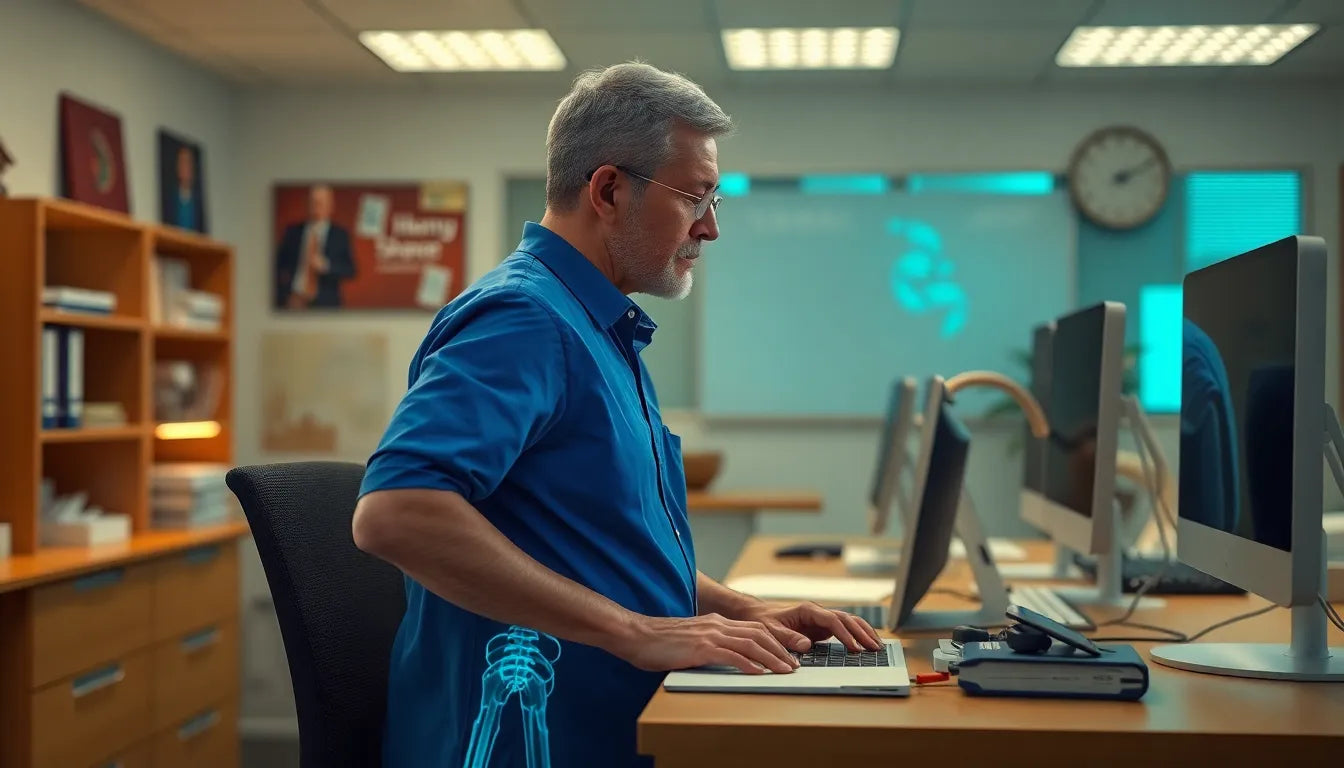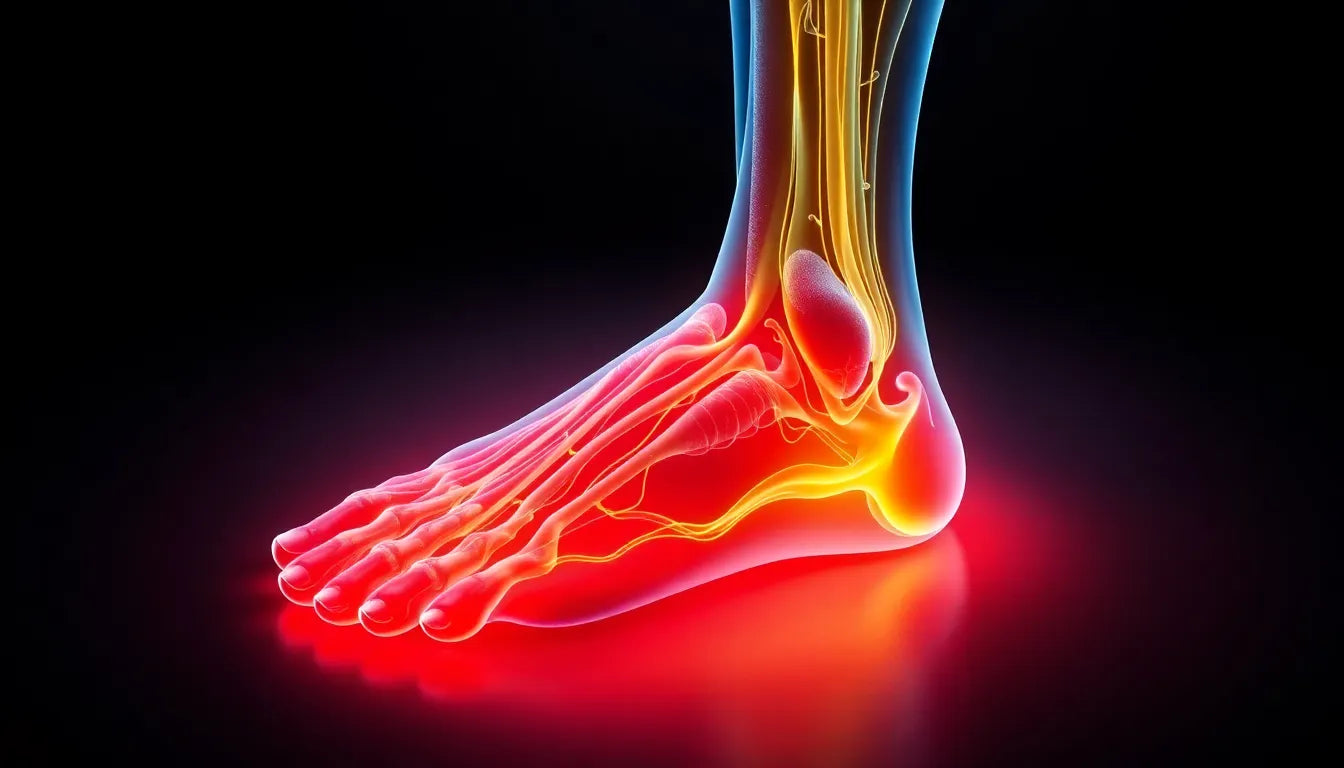Experiencing pain between your shoulder blades can be both frustrating and debilitating, often disrupting daily activities and reducing overall quality of life. One common cause of this discomfort is a herniated disc, particularly in the thoracic spine or lower cervical spine. This condition can manifest as sharp or dull pain, and in some cases, the pain may radiate into the arms, accompanied by numbness, tingling, or even weakness in the upper limbs. Are you struggling with persistent pain between your shoulder blades that disrupts your daily life? Understanding the root cause of this pain is crucial for effective management and relief.
Understanding the pain
A herniated disc between the shoulder blades typically involves the thoracic spine, which is the upper part of the back, or the lower cervical spine. This condition occurs when the soft, gel-like center of a spinal disc pushes through a crack in its tougher exterior, potentially pressing on nearby nerves. This pressure on the nerves can lead to the symptoms mentioned above, making it essential to identify and address the issue promptly.
Given how common such symptoms are, it's important to differentiate a herniated disc from other potential causes of pain between the shoulder blades, such as muscle strain, poor posture, or even underlying health conditions. Accurate diagnosis is the first step towards effective treatment.
Importance of accurate diagnosis
An accurate diagnosis is vital to ensure that the treatment plan is both effective and appropriate for the specific condition. Misdiagnosis can lead to ineffective treatments and prolonged discomfort. Clinical assessments by healthcare professionals, along with imaging studies like X-rays, MRI, or CT scans, play a crucial role in confirming the presence of a herniated disc. These diagnostic tools help rule out other potential causes of pain, such as infections or tumors, ensuring that the treatment plan is tailored to the patient's needs.
By understanding the specific cause of the pain between your shoulder blades, you and your healthcare provider can develop a targeted treatment strategy. This approach not only alleviates pain but also addresses the underlying issue, improving your overall well-being and quality of life. Stay tuned as we delve deeper into the various treatment options and lifestyle modifications that can aid in managing and relieving pain associated with a herniated disc between the shoulder blades.
Conservative treatment approaches for herniated discs
When dealing with a herniated disc between the shoulder blades, conservative treatment is often the first line of defense. These non-surgical methods aim to alleviate pain and promote healing without invasive procedures. Let's delve into some effective conservative treatment options.
Pain management strategies
Managing pain is a critical component of treating a herniated disc. Nonsteroidal anti-inflammatory drugs (NSAIDs) like ibuprofen, acetaminophen, and muscle relaxants are commonly recommended to reduce pain and inflammation. However, it's essential to consult with healthcare professionals to ensure appropriate medication use and avoid potential side effects or interactions with other medications.
The role of physical therapy and exercise
Physical therapy plays a crucial role in the recovery process. A tailored physical therapy program can include specific stretches, posture correction, and strengthening exercises designed to alleviate symptoms and prevent further injury. These exercises help improve flexibility, strengthen the muscles supporting the spine, and enhance overall posture. It's vital to progress gradually in physical activity, guided by a professional, to avoid exacerbating the condition.
Integrating lifestyle modifications
Incorporating lifestyle changes can significantly impact recovery and long-term management of a herniated disc. Stress management techniques, such as meditation or yoga, can help reduce muscle tension and promote relaxation. Maintaining a healthy weight is also crucial, as excess weight can increase strain on the spine. Additionally, ergonomic adjustments in daily activities, like using supportive chairs and maintaining proper posture during work, can prevent further aggravation of the condition. Practical tips for integrating these changes into everyday life can make a significant difference in managing pain and improving quality of life.
Advanced interventions when needed
While conservative treatments are effective for many, there are cases where these methods may not suffice. Persistent pain, neurological deficits, or significant spinal cord compression may necessitate advanced interventions.
Exploring advanced treatment options
In situations where conservative care doesn't provide relief, options like nerve blocks, epidural steroid injections, or surgical interventions may be considered. Nerve blocks and epidural injections aim to reduce inflammation and alleviate pain by delivering medication directly to the affected area. These procedures are typically performed under the guidance of a specialist and can provide significant relief for some patients.
Considerations for surgical intervention
Surgery is generally reserved for severe cases where there is persistent pain, neurological impairment, or risk of spinal cord damage. Procedures such as discectomy or spinal fusion may be recommended, particularly in complex cases involving the thoracic spine. It's crucial to weigh the potential risks and benefits of surgery and to seek expert consultation to determine the most appropriate course of action. Individualized care is paramount, and decisions should be made collaboratively between the patient and healthcare provider to ensure the best possible outcome.
In conclusion, while a herniated disc between the shoulder blades can be challenging, a combination of conservative treatments and, if necessary, advanced interventions can provide relief and improve quality of life. By understanding the available options and working closely with healthcare professionals, individuals can navigate their treatment journey effectively and achieve a successful recovery.
Prognosis and recovery for herniated discs
The journey to recovery from a herniated disc between the shoulder blades varies for each individual but often follows a promising path. With conservative treatment approaches, many individuals experience significant improvement within four to six weeks. This timeframe can vary based on the severity of the herniation and the individual's overall health and adherence to treatment plans. The success of conservative management not only lies in alleviating pain but also in restoring function and preventing recurrence.
While surgical interventions can be effective, they are typically reserved for cases where conservative methods fail to provide relief or when there is a risk of permanent nerve damage. Surgical success rates are generally high, but as with any procedure, there are inherent risks, especially given the complex anatomy of the thoracic spine. Therefore, conservative management remains the preferred initial approach, focusing on pain relief and functional recovery.
Frequently Asked Questions
What are the signs that I might have a herniated disc between my shoulder blades?
Common symptoms of a herniated disc in this area include sharp or dull pain between the shoulder blades, pain radiating into the arms, numbness, tingling, and sometimes weakness in the upper limbs. If you experience these symptoms persistently, it is advisable to seek medical advice for proper diagnosis and management.
How is a herniated disc diagnosed?
The diagnostic process typically involves a combination of clinical assessments and imaging studies. A healthcare provider will conduct a physical examination to assess symptoms and may recommend imaging tests such as X-rays, MRI, or CT scans to confirm the presence of a herniated disc and rule out other potential causes.
Can lifestyle changes really make a difference in my recovery?
Yes, lifestyle changes can significantly impact your recovery. Stress management, maintaining a healthy weight, and making ergonomic adjustments in your daily activities can support healing and prevent further injury. These changes help reduce strain on the spine and improve overall well-being.
When should I consider surgery for a herniated disc?
Surgery is generally considered when conservative treatments fail to alleviate symptoms, or if there is significant neurological impairment or risk of spinal cord damage. It is crucial to discuss with your healthcare provider to evaluate the risks and benefits and ensure that surgery is the best option for your specific condition.
Are there any exercises I should avoid with a herniated disc?
While exercise is beneficial, certain activities may exacerbate symptoms if not done correctly. It is advisable to consult a physical therapist for personalized exercise recommendations. Generally, high-impact activities and those that involve heavy lifting or twisting should be avoided unless supervised by a professional.
Sources
- More Good Days. "Herniated Disc between the Shoulder Blades."
- Cleveland Clinic. "Herniated Disk (Bulging Disk): Symptoms & Treatment."
- UVA Health. "Cervical Disc Herniation Treatment."
- Revival PT. "Upper Back Herniated Disc: Symptoms, Causes & Treatment."
- OrthoNebraska. "Back Pain Between Shoulder Blades: Causes & Relief."
- More Good Days. "Thoracic Herniated Disc."
- OrthoIllinois. "Herniated Disc."


















